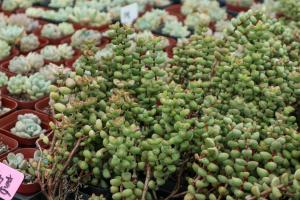Introduction
Large plastic plant pots are becoming increasingly popular with gardeners who want to make their outdoor spaces more attractive and functional. But when it comes to filling these pots, many people wonder what the best filler is. In this article, we will explore some of the options available and try to determine which is the best for your needs.
Option 1: Soil
The most common filler for large plastic plant pots is soil. This is a natural and easy option that most gardeners are familiar with. However, it can be heavy and may not drain well, which can cause problems for some plants. In addition, using soil can be expensive, especially if you have a lot of large pots to fill.
Option 2: Perlite
Another option is perlite, which is a lightweight material made from volcanic glass. Perlite is easy to handle and provides excellent drainage for your plants. It's also a cost-effective option, as you can buy it in large bags for relatively low prices. However, perlite doesn't provide any nutrients for your plants, so you will need to fertilize them separately.
Option 3: Vermiculite
Vermiculite is similar to perlite in that it is a lightweight material that provides good drainage. However, vermiculite also provides some nutrients for your plants, which can be beneficial. The downside is that vermiculite can be expensive and is not as widely available as perlite.
Option 4: Peat Moss
Peat moss is a common filler for large plastic plant pots, as it is lightweight and provides good drainage. It's also affordable and widely available. However, like perlite, it doesn't provide any nutrients for your plants, so you will need to fertilize separately. In addition, there are concerns about the sustainability of peat moss, as it is often harvested from sensitive ecosystems.
Option 5: Coconut Coir
Coconut coir is a relatively new option for filling large plastic plant pots, but it's quickly gaining popularity. It's made from the fibers of coconut husks and is lightweight, retains moisture well, and provides good drainage. Coconut coir is also sustainable, as it is a byproduct of coconut harvesting. However, it can be more expensive than some other fillers and may not be as widely available.
Conclusion
Choosing the best filler for your large plastic plant pots depends on your individual needs and preferences. Soil is a tried and true option, but it can be heavy and expensive. Perlite and vermiculite are lightweight and provide good drainage, but they don't provide nutrients. Peat moss is affordable and widely available, but there are concerns about sustainability. Coconut coir is a sustainable option that provides good drainage and retains moisture, but it can be expensive. Ultimately, the best filler for your large plastic plant pots will depend on your specific situation and what you prioritize most in a filler.

 how many times do yo...
how many times do yo... how many planted tre...
how many planted tre... how many pine trees ...
how many pine trees ... how many pecan trees...
how many pecan trees... how many plants comp...
how many plants comp... how many plants can ...
how many plants can ... how many plants and ...
how many plants and ... how many pepper plan...
how many pepper plan...































